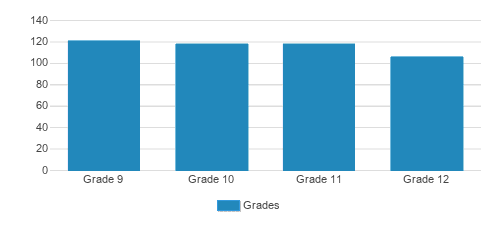Marin Academy vs. The Branson School
Should you attend Marin Academy or The Branson School? Visitors to our site frequently compare these two schools. Compare their rankings, scores, reviews and more to help you determine which school is the best choice for you.
School Overview
Top Rankings
Marin Academy ranks among the top 20% of private schools in California for:
Category
Attribute
Student Body
Sports offered
Extracurriculars
The Branson School ranks among the top 20% of private schools in California for:
Category
Attribute
Acceptance Rate
Student Body
AP Courses
School History
Overview
Educational leader in the Bay Area with 445 students in grades 9-12
All genders; Student-to-faculty ratio is 8:1; the average class size is 12-15
Students come from over 75 middle schools & over 50 different zip codes around the Bay Area
Follows a six-day rotating block schedule of 75-minute classes
The curriculum offers 135 different course titles Students of color comprise about 37% of the student body
Nearly a quarter of students receive tuition assistance, nearly $5 million
The Branson School inspires excellence in a nurturing, vibrant educational community based on personal and intellectual integrity. At the heart of Branson is the trusting, dynamic relationship between dedicated teachers and students.
Through the vitality, breadth, and rigor of its programs, Branson encourages students to think critically, communicate clearly, develop their individual talents and interests, and pursue a lifelong passion for learning. Branson believes that diversity of people and thought enriches us all and promotes responsible leadership in the global community.
We are a caring and supportive community that helps students fully realize their potential.
We exercise young people's minds and bodies; nurture their creativity, capacity for compassion, and sense of humor; and help them build an awareness of their responsibilities to their communities and the world.
Grades Offered
9-12
9-12
Blue Ribbon School
No
No
Offers Post-Graduate Year
No
n/a
Learning Difference Programs
No
n/a
Year Founded
1971
1920
Students Body
Total Students
463 students
319 students
Student Body Type
Co-ed
Co-ed
% Students of Color
37%
21%
Students by Grade


Students by Grade
Grade 9 Students
121
72
Grade 10 Students
118
82
Grade 11 Students
118
86
Grade 12 Students
106
79
Academics and Faculty
Total Classroom Teachers
78 teachers
43 teachers
% Faculty with Advance Degree
80%
n/a
Average Class Size
15
14
Number of AP Classes
n/a
131
Student-Teacher Ratio
6:1
7:1
Classroom Dress Code
Casual
n/a
Finances and Admission
Admission Deadline
Jan. 8
None / Rolling
Tuition Cost
$64,750
$65,525
Tuition Notes
Tuition Assistance awards range from 100%-10%
n/a
% on Financial Aid
25%
n/a
Acceptance Rate
n/a
20%
Admissions Director
Diane Boodrookas
n/a
Admissions Associate
Teyana Irving
n/a
Sports
Total Sports Offered
15
n/a
Extracurriculars
Total Extra-curric.Total Extracurriculars
42
n/a
Extra-curric.Extracurriculars
Club or Organization:
Animal Welfare ClubAsian Student Organization
Best BuddiesBlack Student Union
Book Discussion ClubChess Club
Climate Tech ClubCommunity Action Club
Council on SustainabiltiyCraft Club
Crossroads TutoringCryptocurrency Club
D&D ClubEchoes Literary Magazine
Film ClubFinancial Aid Affinity Club
Frisbee ClubGarden Club
Gender Queer Affinity GroupGender-Sexuality Awareness Club
Global Role of Women (GROW)Jewish Student Organization
Latin Student UnionLearning Profiles Affinity
Mental Health Awareness ClubMiddle Eastern Student Organization
Mixed Ethnicities ClubMock Trial
Model UNMountain Bike Club
Music Creation ClubQueer Affinity
Queer BIPOC Affinity GroupRethinking Whiteness
Rock Climbing ClubSurf Club
Surfrider ClubThe 1600 (Student Newspaper)
Women in STEMWomen of Color (WOC) Club
Yearbook ClubYoung Brothers (for men of color)

